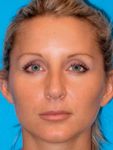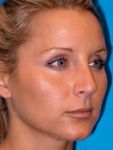- General Dermatology
- Eczema
- Chronic Hand Eczema
- Alopecia
- Aesthetics
- Vitiligo
- COVID-19
- Actinic Keratosis
- Precision Medicine and Biologics
- Rare Disease
- Wound Care
- Rosacea
- Psoriasis
- Psoriatic Arthritis
- Atopic Dermatitis
- Melasma
- NP and PA
- Skin Cancer
- Hidradenitis Suppurativa
- Drug Watch
- Pigmentary Disorders
- Acne
- Pediatric Dermatology
- Practice Management
- Prurigo Nodularis
Article
Contemporary beauty: nonsurgical tools meet new standards for reducing wrinkles, replenishing volume
Today's nonsurgical rejuvenation tools provide effective means for achieving objectifiable contemporary standards of facial beauty, an expert says.

Key Points

But good outcomes still rely on the physician's aesthetic judgment and skill, says Steven Liew, M.D., a Sydney, Australia, plastic surgeon who is medical director of Shape Clinic.
Eye of the beholder

The Phi mask developed by Stephen Marquardt, M.D., attempts to introduce 20th-century objective measurements to facial beauty concepts, but it's an extremely complex model that has proven impractical for daily use, Dr. Liew tells Dermatology Times.
Conversely, he says that a more universal concept of facial beauty would help physicians and patients readily identify why one face is more attractive than another.
Facial shape

"Human eyes are fairly primitive," he says. When viewing faces, people notice skin color and texture first, then facial shape, followed by individual facial features, Dr. Liew says.
Common facial shapes include round, square, oblong, heart-shaped and - the ideal shape - oval, he says.
The ogee curve

More specifically, he defines the ogee curve as a concave arc flowing into a convex arc, forming an S-shaped curve with vertical ends.
"The ogee curve is a three-dimensional concept," Dr. Liew says.
As faces age, they generally experience a flattening of this curve, he says. Therefore, Dr. Liew says, "Any rejuvenation procedure, be it a filler, Botox (botulinum toxin A, Allergan) or other procedure, should restore the ogee or, in some cases, accentuate the existing ogee."





